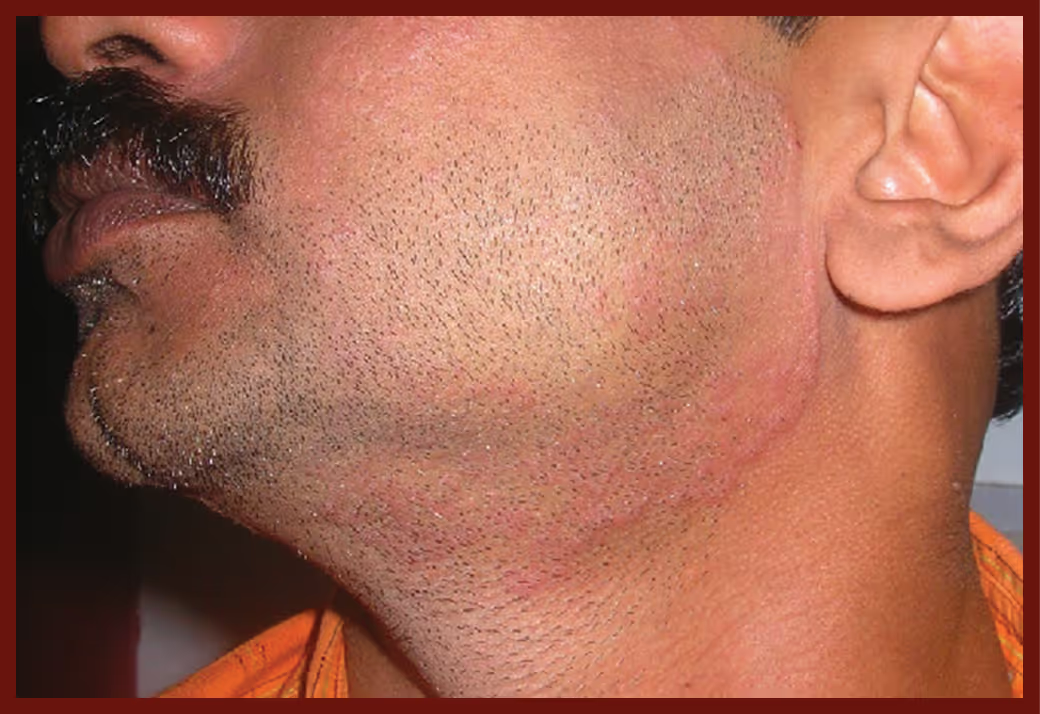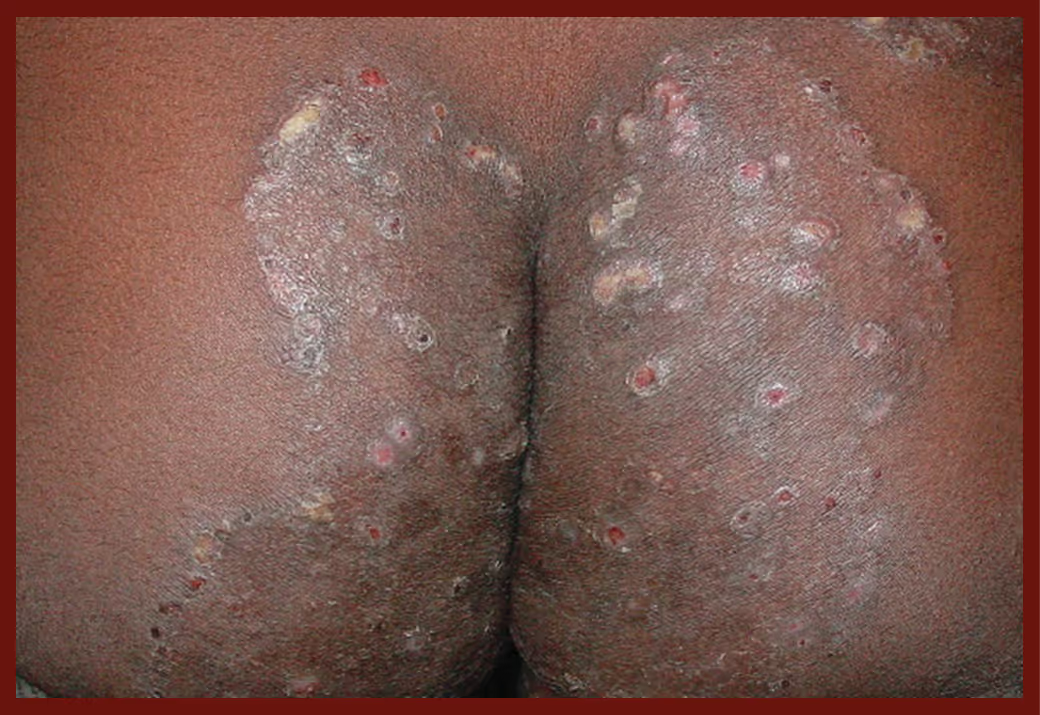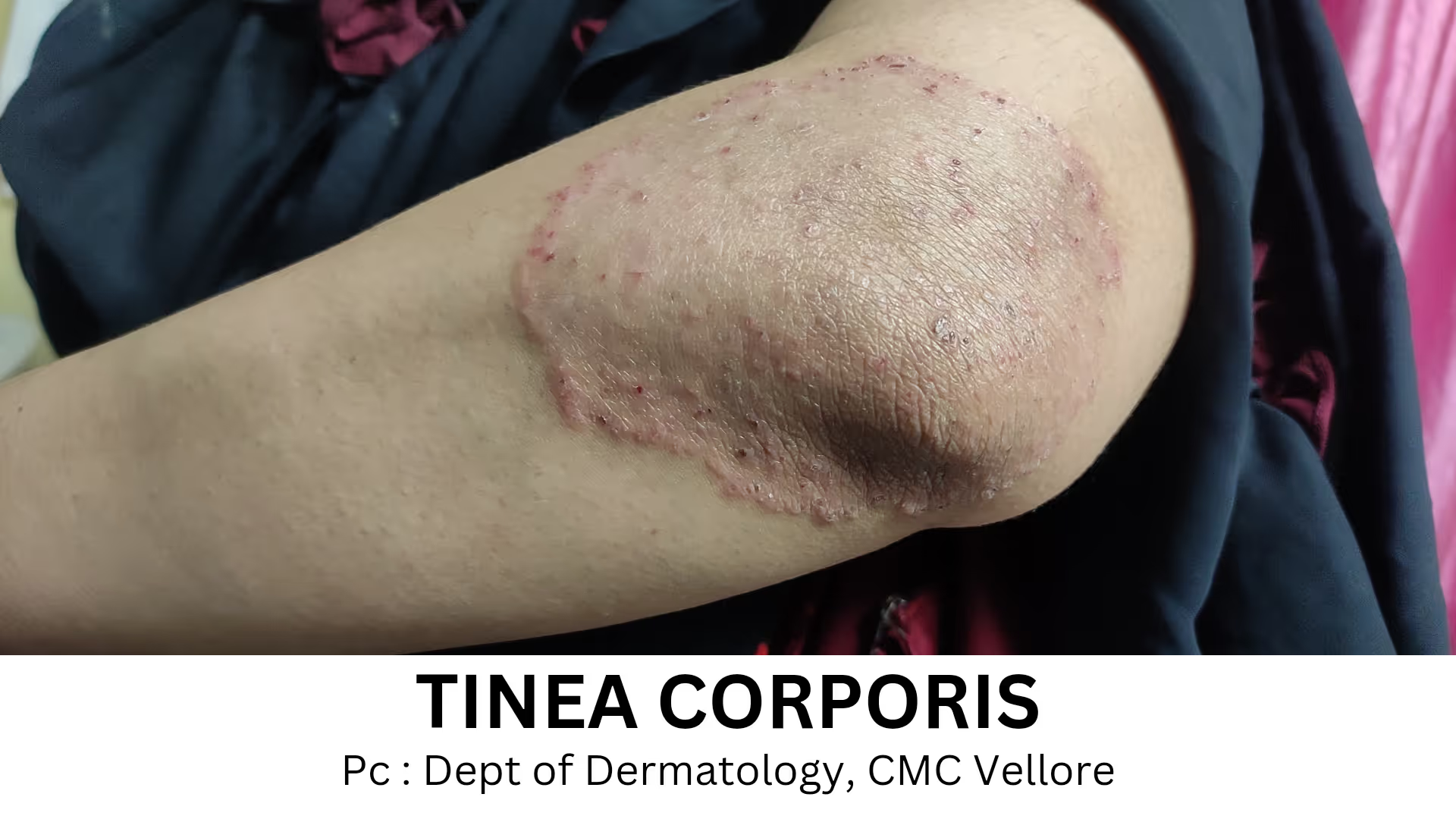Dermatophyte infection is a superficial fungal infection of skin, hair and nails. It is also known as ringworm. In Hindi it is termed as Daad and in Marathi it is termed as Gachkaran.

Ringworm occurs when a person gets infected with Dermatophytes which is a superficial fungus. This fungus lives off human keratin and that is why the infection can occur on the skin, hair and nails
Dermatophyte infection is transmitted by direct skin contact with infected person and by sharing objects of daily use (fomites).
Dermatophyte infection is more common in tropical climate.
High temperature, humidity and occlusive atmosphere predisposes to development of Dermatophytosis.
Certain diseases like diabetes mellitus, HIV infection or patients taking steroids or anticancer drugs are high risk for development of Dermatophytosis.
Poor hygiene, increased sweating, self- medication or use of topical steroids, steroid- antifungal combinations, infection in family members are contributory factors.
Dermatophyte infection presents with severe itching and skin lesions in the form of circular red areas with raised border and central clearing. The infection clears in the centre and extends towards the periphery.
The folds of the body are the most common sites affected, especially the groins (hence termed jock itch), the armpits, areas below the breasts. The infection can extend onto the abdomen, buttocks and thighs.
The palms, soles, web spaces of fingers and toes may present with itchy and scaly lesions. Nails may be infected and act as a source for recurrent Dermatophytosis. The nails may show discoloration or total damage of the nail plate can be seen. Toe nail infections are common in elderly and diabetic patients.
Hair infection and appears as scaly patches with loss of hair or severe infections with pus filled lesions may be seen. Hair involvement is common in children.

Consult a dermatologist since it can be easily diagnosed by the presence of itching clinical appearance of the lesions.
Diagnosis is usually done by dermatologist based on clinical features. If needed, scrapings from the skin or clippings of the nail and hair can be subjected to laboratory tests to confirm the diagnosis and identify the causative fungus by microscopy and culture
Various topical and systemic antifungals are available for treatment.
Dose, duration and type of medicine is decided by the dermatologist based on severity of the disease, and presence of other diseases such as kidney/liver disease, pregnancy as it can alter the choice of medicine.
Topical steroid- antifungal combinations are commonly over the counter prescriptions used as self- medication due to the instant relief. These creams when applied may temporarily make you feel better with the relief of symptoms, because of the steroid component, but the fungal infection never clears out and over a period of time there are steroid related side effects on the skin like thinning, stretch marks and light coloured patches. Hence it is important that creams for ringworm should not be purchased over the counter without a valid prescription or on the recommendation of friends/neighbours/family members/non allopathic-non dermatology professionals.
Use of oral antifungals can have adverse effects on liver and it can also have certain interaction with medication for diabetes. Hence inform your dermatologist about the medicines you are taking before he prescribes you any medicines. The dermatologists may also order some blood tests before prescribing and while you are on those medicines.
Yes, Dermatophytoses can recur. Various factors can contribute to recurrences-inadequate treatment, improper adherence to treatment, improper or inadequate treatment of close contacts or family members, resistance to antifungal drugs, use of topical steroid antifungals and self medication.

Few simple measures can be adopted to prevent the infections and recurrences. Do follow these measures
Take and apply your medicines regularly and for the adequate duration.
The topical antifungal needs to be applied on the entire affected are plus two centimeters outside on the normal skin.
Take bath after activities which result in excessive sweating. Pat yourself dry carefully after taking bath.
Dry the clothing especially undergarments inside out in the sun.
Towels, undergarments, napkins, handkerchiefs should be washed in hot water, sundried, ironed and then worn.
Change your socks regularly.
Avoid wearing tight undergarments. In males, boxer shorts are preferably to the conventional V shaped underwear.
Cotton loose clothing is preferred. Avoid jeans/jeggings/ leggings and other tight clothing.
It is important that all contacts including the family members and people having similar conditions in the work place are treated correctly and completely for the fungal infections. If your contacts are left untreated, you may contact the infection again.

Don’t self-medicate.
Do not buy creams OTC/on the recommendation of chemists/neighbours/friends/family members. It is advisable to see a dermatologist for skin issues.
Disclaimer: This article is only for general patient information and is not intended for self medication. There is no legal liability of IADVL arising out of any adverse consequence to the patient. Subsequent to its use for self treatment of the disease images adjust for the depiction of the condition and is not to be used for any other purpose.
Explore articles in this section to gain a deeper understanding of various skin diseases and conditions. Each article provides detailed information on symptoms, causes, and treatment options, helping you to manage and address these dermatological issues effectively.

Psoriasis is a skin condition where new skin forms at a faster rate, showing up as red rashes with whitish scales, commonly over elbows, knees, and other body parts.

Dandruff is a common scalp condition in which small pieces of dry skin flake off from the scalp and is usually associated with itching. The exact cause of Dandruff and Seborrhoeic Dermatitis is unknown.

Painful swelling involving the hair is commonly known as boil or folliculitis. If it occurs more than three times in a year, it is known as recurrent folliculitis. when the infection is transmitted by direct skin contact.